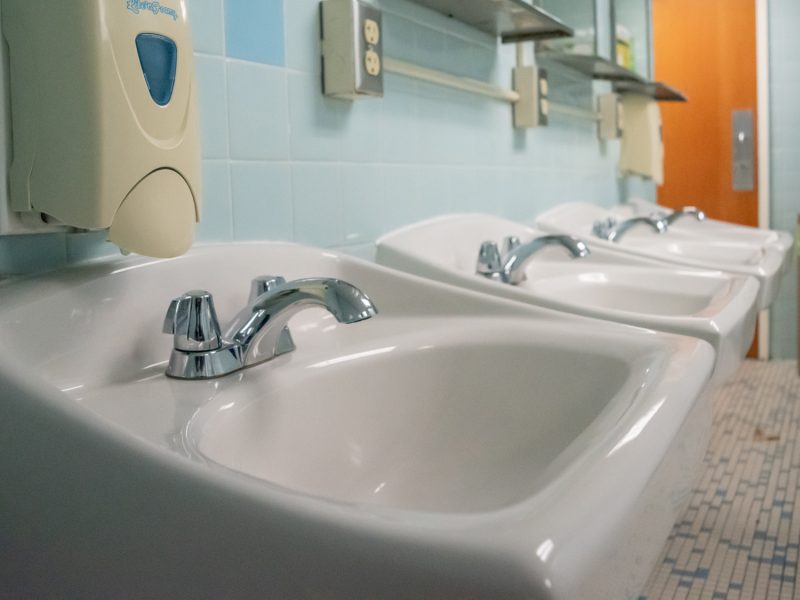Students who use Nite Ride now have another way to request the transportation in the late night and early morning. The Department of Transportation Services has linked the service to an app where students can request free rides.
The free app, Transloc Rider, was made in response to the influx of calls that Nite Ride operators receive on any given night, said Nick Timrots, the assistant general manager of DOTS shuttle operations. The app is available for download in the Apple App Store and Google Play for students with smartphones that have access to WiFi or data connection.
“The idea was born out of desire for an app kind of like Uber,” Timrots said. “You know, Uber has kind of blown up over the years, so we wanted something like that to make it easier for our customers to be able to [get around].”
Nite Ride operates seven nights a week, from 5:30 p.m. to 7:30 a.m. Riders are able to enter their pickup point and destination, similar to Uber, and the app assigns a DOTS driver to them, Timrots said. The app also estimates when the driver will arrive.
Because university buses don’t ask for identification, anyone with access to the app can request a ride, Timrots said. This includes members of the community if they are traveling within Nite Ride’s jurisdiction boundaries, which can be viewed here.
The process is similar to that of the university’s Metro bus, Timrots said, which travels off the campus but also doesn’t ask for people to show university ID to board.
The app benefits both riders and drivers by reducing phone backlog and automatically creating a GPS-navigated route, which will cut back the time drivers spend planning a route based on their location, Timrots said.
“Probably the biggest problem we have is our phone queue,” Timrots said. “We can only handle one ride at a time, so sometimes people are waiting in the phone queue for several minutes, possibly longer. With the app, there is no wait. You just pull up the app, you request your ride, and go from there, so you don’t have to spend any more time on hold.”
And because of this increased efficiency, students are actually on the bus for less time, Timrots said. Even in just the first month of use, the data has shown that on average, the time students spend on the shuttle has decreased by almost a full minute per person, Timrots said.
DOTS began marketing the app toward the end of August, and made information available on their website. However, just 10 percent of people who use Nite Ride do so through the app, Timrots said.
Seniors Elina Levit, a history major, and Santiago Vivas-Gonzalez, a mechanical engineering major, said they’ve used Nite Ride frequently the past few semesters, but didn’t know the app was an option.
Levit said she had positive experiences with Nite Ride because it provided her with an early morning ride to her internship, but also recognizes this app would be equally, if not more, beneficial to students.
“It would be faster because when you call in … there are certain things you have to wait for, and then they have to connect you to a person, and you have to talk to the person and ask them if they will send a Nite Ride to you, so I think it would be easier to have an app,” she said.
Vivas-Gonzalez, on the other hand, has had mixed experiences with Nite Ride. He said his friends have had problems with calls being dropped while they were waiting for a ride. For him, the main thing that this app promotes is safety.
“It would make it much more accessible and give more people an incentive to use Nite Ride if it was easier like that, and it would also help the calling issue,” Vivas-Gonzalez said. “The whole point of Nite [Ride] is to get people around safer, so I think this would make everyone be safer in general and reduce the people at risk at certain times.”
CORRECTION: Due to an editing error, a previous version of this story incorrectly spelled Nick Timrots name on two references. This story has been updated.



